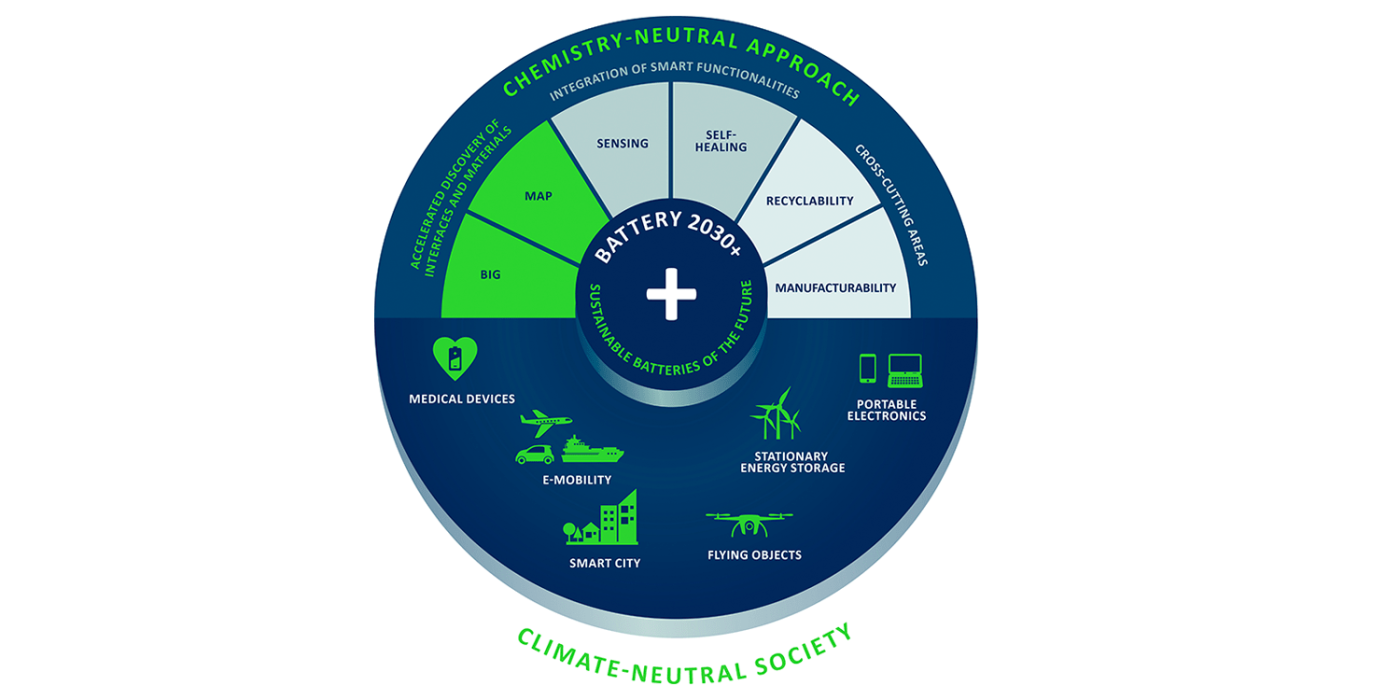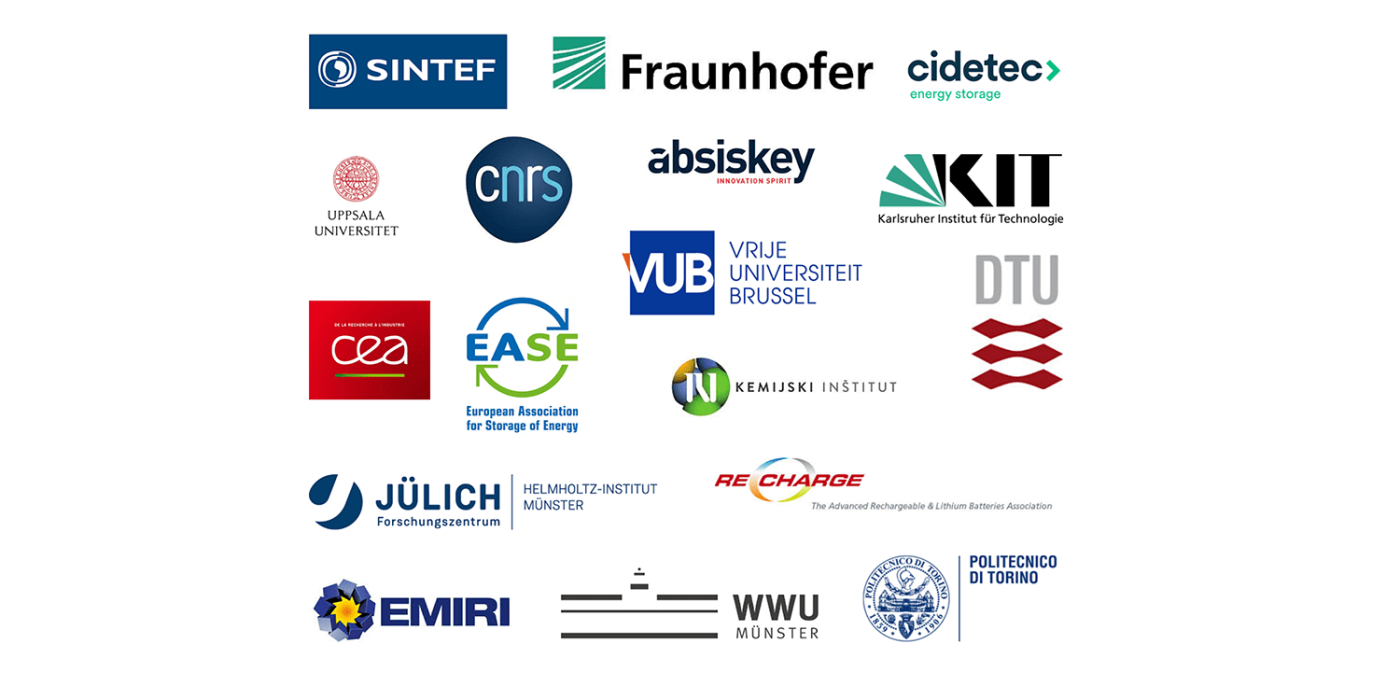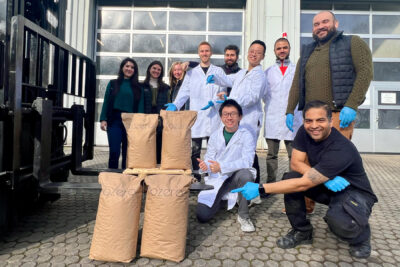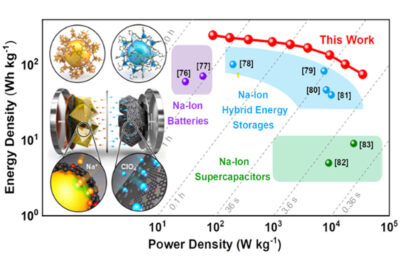Battery 2030 – smart, sustainable & chemistry-neutral
The European large-scale research initiative Battery 2030+ presents its roadmap to inventing the green batteries of the future. The Fraunhofer R&D Center for Electromobility at the Fraunhofer ISC in Wuerzburg coordinates the project that defines three key areas.
A key objective of Battery 2030+ is to achieve the lowest possible CO2 footprint for batteries. Measures include sustainably degraded materials, higher material resource efficiency and smarter functions, more environmentally friendly scalable manufacturing processes for affordable battery solutions, and more efficient recycling and remanufacturing methods.
“We are currently contributing our material and manufacturing know-how to over a dozen national and European collaborative projects relating to battery development. For example, we are working on components for solid-state batteries and modern, selective and efficient recycling processes,” says Dr Henning Lorrmann, head of the Fraunhofer ISC’s R&D centre that coordinates the initiative.
Indeed, the new project belongs to the European Battery Alliance (EBA) that the EU Commission first called for in 2018 to develop a “green battery” that would adhere to EU standards. The core group comprises 17 organisations from nine European countries, coordinated by Kristina Edström, Professor of Inorganic Chemistry at Uppsala University. The initiative is funded by the European research programme Horizon 2020, among others.


The now published research roadmap has been developed through a European-wide consultation process and stresses a chemistry neutral approach paired with other technological advances such as artificial intelligence. “Battery design and development are entering the digital age,” summarises Edström, who doubles as Director of Battery 2030+.
On a more precise note, the roadmap identifies three major research themes: Accelerated discovery of interfaces and materials, integration of smart functionalities, and manufacturability and recyclability as cross-cutting areas.
Concrete action in said key areas includes the establishment of a Materials Acceleration Platform (MAP) for battery materials research using high-throughput synthesis and characterization as well as materials computation, automated data analysis, data mining, and artificial intelligence.
The press release also identifies the development of a Batteries Interface Genome (BIG) that will “lay a new basis to the understanding of the processes that govern the functioning of every battery”.
For smart functionalities, meaning those that keep the battery from failing, the paper names sensing chemical and electrochemical reactions directly inside a battery cell as well as self-healing properties.
Lastly, cross-cutting areas of manufacturability and recyclability of batteries are to feed into the materials discovery and development process from the start. The Battery 2030+ researchers thus hope to “ensure that all research approaches lead to new batteries that can actually be produced and recycled, not only cost-effective but also as climate-neutral as possible”.
battery2030.eu, battery2030.eu (roadmap as pdf), idw-online.de (PI)





0 Comments